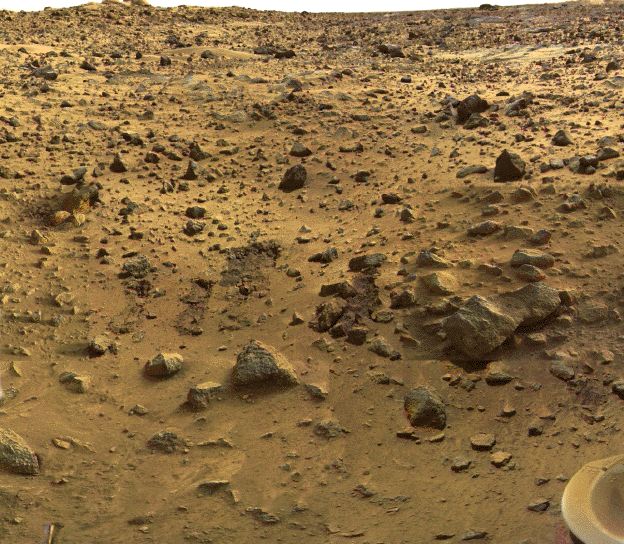
|
Explanation: On July 20, 1976, NASA's Viking 1 lander become the first spacecraft to land on Mars, followed weeks later by its twin robot explorer, the Viking 2 lander. Operating on the Martian surface into the early 1980s, the Vikings took thousands of pictures, conducted sophisticated chemical searches for life, and studied the martian weather and geology. In the dramatically detailed image above, a field of rocks and boulders is viewed from the Viking 1 landing sight on Chryse Planitia (the Plain of Chryse). Viking 1's dusty foot pad is just visible at the lower right. The image was created by combining high resolution black and white images with lower resolution color images of the same area. NASA is continuing its well chronicled martian exploration program as the Mars Odyssey spacecraft is scheduled to arrive at the mysterious Red Planet on October 24th. What's Mars like today?
|
January February March April May June July August September October November December |
| |||||||||||||||||||||||||||||||||||||||||||||||||||||||
NASA Web Site Statements, Warnings, and Disclaimers
NASA Official: Jay Norris. Specific rights apply.
A service of: LHEA at NASA / GSFC
& Michigan Tech. U.
Based on Astronomy Picture
Of the Day
Publications with keywords: nebula - star formation - Viking project - Mars
Publications with words: nebula - star formation - Viking project - Mars
See also:
- APOD: 2025 December 9 B The Heart of the Soul Nebula
- APOD: 2025 September 28 B Leopard Spots on Martian Rocks
- APOD: 2025 July 15 B Collapse in Hebes Chasma on Mars
- APOD: 2025 July 10 B Lynds Dark Nebula 1251
- APOD: 2025 July 6 B The Spiral North Pole of Mars
- APOD: 2025 June 29 B Dark Sand Cascades on Mars
- APOD: 2025 June 23 B W5: Pillars of Star Formation
